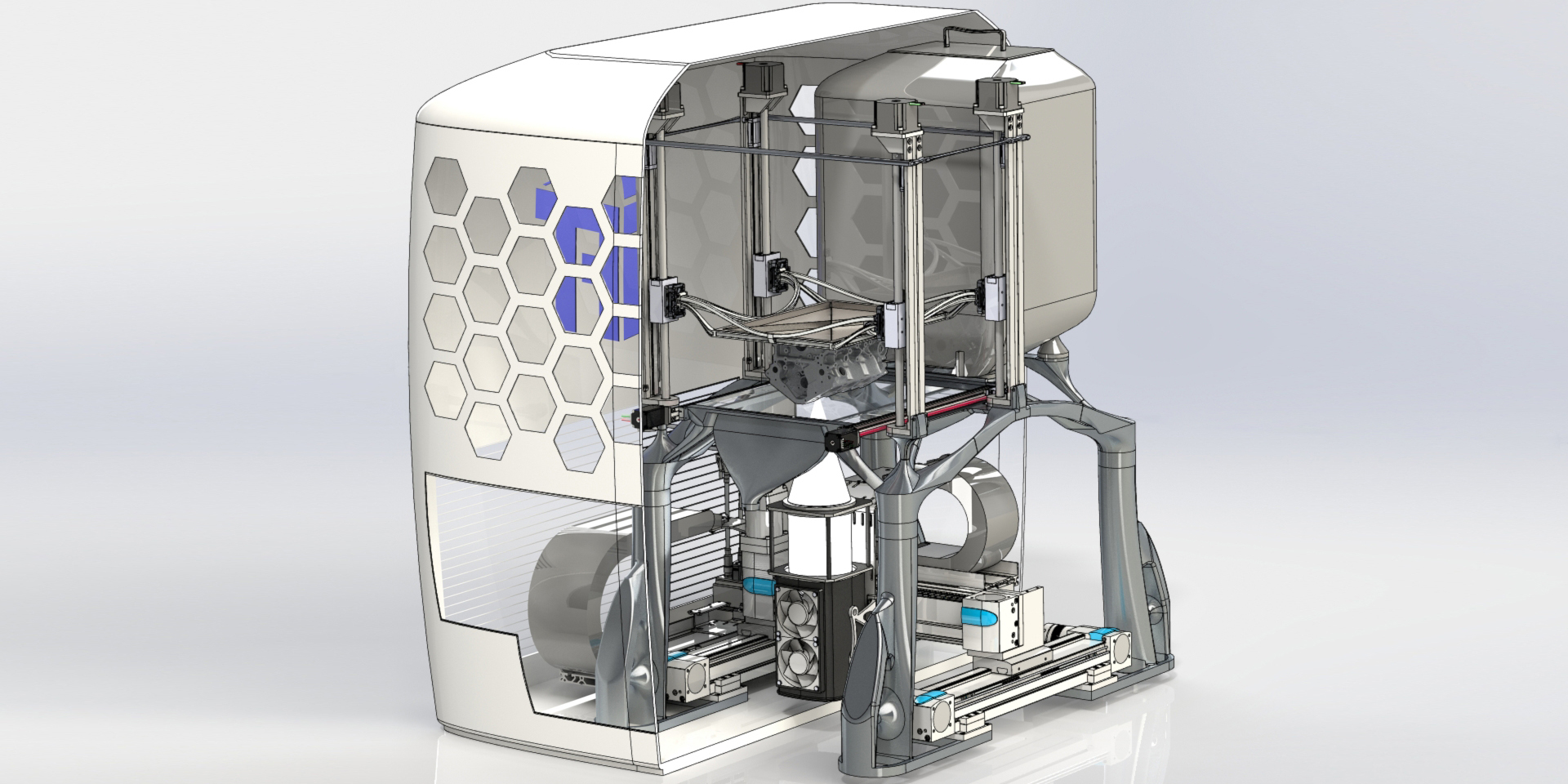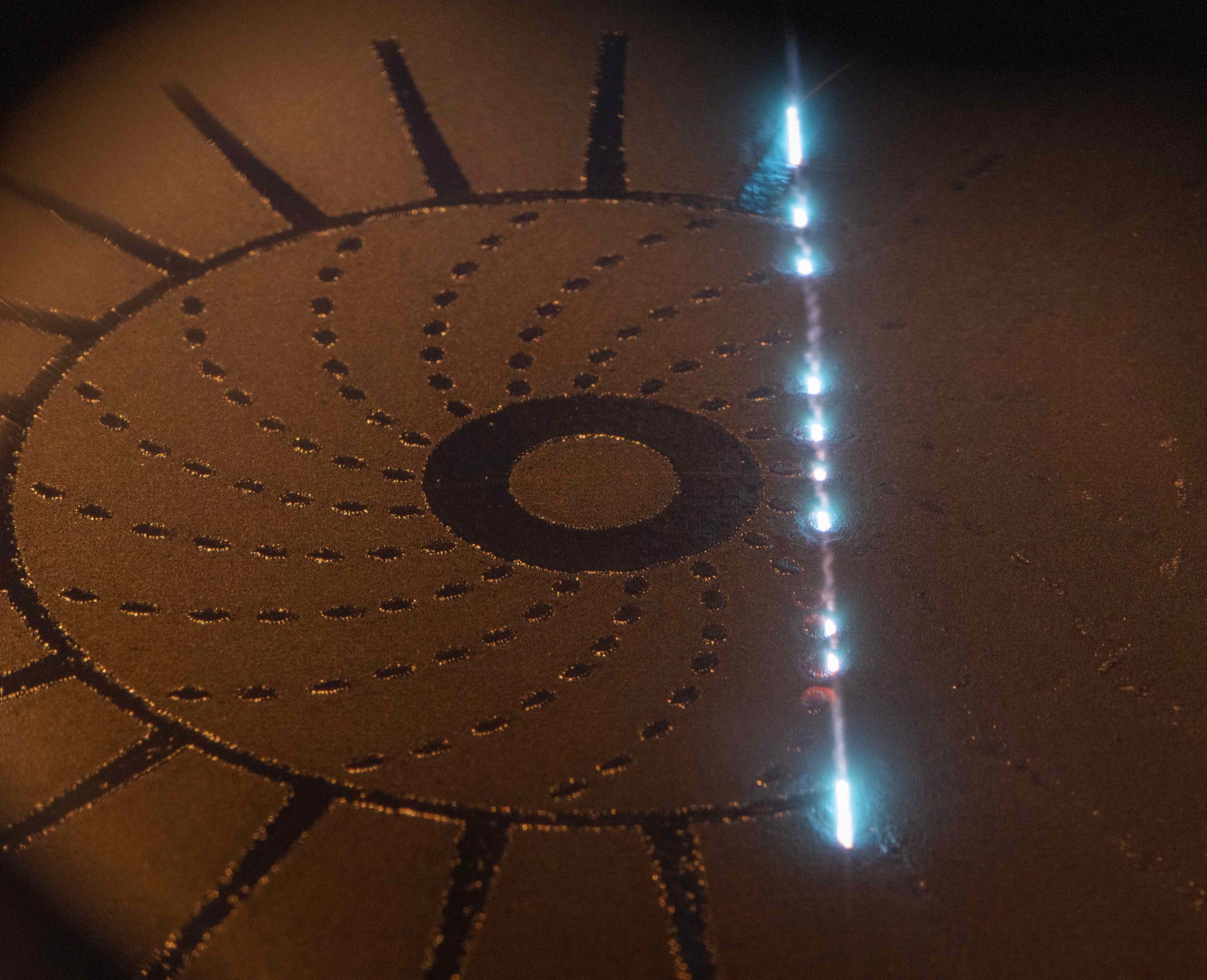Engineers at Graz University of Technology (TU Graz), Austria, have developed a new metal powder additive manufacturing system that relies on LED instead of laser sources to melt powder.
The 3D printer uses a process known as selective LED-based melting (SLEDM), developed by a team led by Franz Haas, head of the Institute of Production Engineering at TU Graz.
While selective laser melting (SLM) and electron beam melting (EBM), in which metal powder is melted by means of a laser or electron beam, SLEDM instead uses high-power LED light sources to melt the powder.
The key advantages of using an LED energy source, according to the TU Graz engineers, is that it optimizes the metal 3D printing process in terms of construction time, metal powder consumption, equipment costs, and post-processing effort. Haas explains that, when using the SLEDM process, “The time-consuming, usually manual reworking that is necessary with current methods, for example, smoothing rough surfaces and removing supporting structures, is no longer necessary and saves further valuable time.”

What are metal powder bed fusion processes?
SLM and EBM are known as metal powder bed fusion additive manufacturing processes. Using either a laser or electron beam, metal powder is melted and fused together to form the layers of a component. The part is thus built up layer-by-layer, until it is fully 3D printed. Typically, SLM and EBM technologies are used in applications requiring complex metal parts, in industries such as aerospace. For example, the European Space Agency (ESA) used SLM 3D printing to fabricate a full scale, 3D printed rocket engine, which it tested for the first time in 2019. California-headquartered aerospace company Rocket Lab leverages EBM to produce its 3D printed Rutherford rocket engines, which powers the firm’s Electron Rocket.
Both processes are also seeing research projects and updates that aim to develop their capabilities further. Recently, researchers from Texas A&M University established a method of using SLM to 3D print complex steel structures free from porosity. UK-based engineering firm Wayland Additive announced a new EBM process known as NeuBeam, which it hopes to commercialize by the end of the year.
However, seeking to solve key problems of both the powder bed-based manufacturing processes, engineers at TU Graz have instead leveraged a high-power LED beam in place of the laser or electron beam to melt metal powder. In doing so, Haas’ team claims that SLEDM overcomes key limitations of SLM and EBM technologies, where producing large-volume metal components can take a significant amount of time. It also eliminates the need for time-consuming manual post-processing.

Applications of the SLEDM process
TU Graz’s SLEDM 3D printer uses high power LED light sources specially adapted by west Styrian lighting specialist Preworks. They are equipped with a complex lens system that allows the diameter of the LED focus to be altered between 0.05 and 20 millimeters during the melting process.
By changing the focus of the LED beam, larger volumes can be melted per unit of time, according to the TU Graz engineers, without having to dispense with filigree internal structures. This can potentially help to reduce the production time for fabricating components for fuel cell or medical technology.
Furthermore, the SLEDM 3D printer uses a production plant that adds the component from top to bottom, in contrast to other metal melting plants. The TU Graz engineers state that this helps to reduce the required amount of powder, and allows necessary post-processing procedures to be carried out during the printing process.
Currently, a demonstrator of the SLEDM process is being considered in the K-Project CAMed of the Medical University of Graz, which opened a medical 3D printing laboratory in October 2019. There, the 3D printer will be used to produce bioresorbable metal implants in the form of magnesium alloy screws for bone fractures. Using SLEDM, it will be possible to fabricate these implants directly in the operating theatre, as Haas explains, “an LED light is naturally less dangerous for the operation than a powerful laser source.”
As well as medical, Haas’ team is also focused on applying its SLEDM process in the field of sustainable mobility. Specifically, the engineers aim to 3D print components such as bipolar plates for fuel cells or components for battery systems. “We want to make additive manufacturing using SLEDM economically viable for e-mobility and position SLEDM in this field of research at an early stage,” comments Haas. As the team continues to develop the process at TU Graz, Haas will also be working on producing a marketable prototype of the SLEDM metal 3D printer.
The nominations for the 2020 3D Printing Industry Awards are now open. Who do you think should make the shortlists for this year’s show? Have your say now.
Subscribe to the 3D Printing Industry newsletter for the latest news in additive manufacturing. You can also stay connected by following us on Twitter and liking us on Facebook.
Looking for a career in additive manufacturing? Visit 3D Printing Jobs for a selection of roles in the industry.
Featured image shows the SLEDM 3D printer developed at TU Graz melts metal powder using high-performance LED light sources and then processes it into components in additive manufacturing. Photo via TU Graz.


